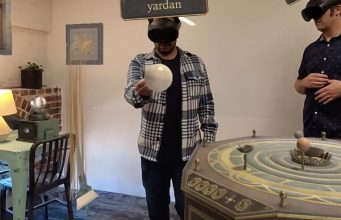01 To remedy that, the company threw out an open source Unity demo it hopes to showcase some of the most compelling things you can do in MR.

Called
Cryptic Cabinet, the escape room demo was designed to highlight the capabilities of the company’s MR Presence Platform on Quest, which Meta says can transform any room into a unique and immersive gameplay experience.Anyone with a Quest 2/3/Pro
and play the new immersive escape room, which warps a mysterious cabinet and a host of cryptic puzzles items into your room.can download it nowAbove all, Meta says in
the announcement blog postCryptic Cabinet was built to showcase “how developers can create an MR experience that is tailored to each player’s room,” noting that the room layout provided during the MR space setup gives developers the ability to deploy items on the user’s walls, floor, ceiling, and furniture.You can check out
Cryptic Cabinet in action below:https://www.youtube.com/watch?v=9ftDaJOPpqg
Like how the company seeded developers with VR demos in the early days, Meta says
Cryptic Cabinet is similarly here to show off best practices when using the whole gamut of its MR software features, including Scene API, Shared Spatial Anchors, Colocation, Passthrough, and Passthrough Color Mapping. Meta MR mini-games seen in Ghostbusters: Rise of the Ghost Lord (2023) available on GitHuband
Stranger Things VR (2024)good amount of developer resources are fine freebies, but nothing to write home about. Being able to see your dog as you play Demeo (2021) and
Broken Edge (2022) in your living room is also cool, but neither of them really use the player’s room to its fullest extent.That’s not to say there isn’t any MR content that doesn’t lie outside the binary of ‘aliens breaking through your walls, and regular VR game but with passthrough‘, although there are very few at this point. It We